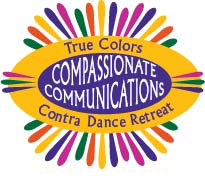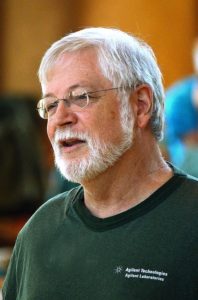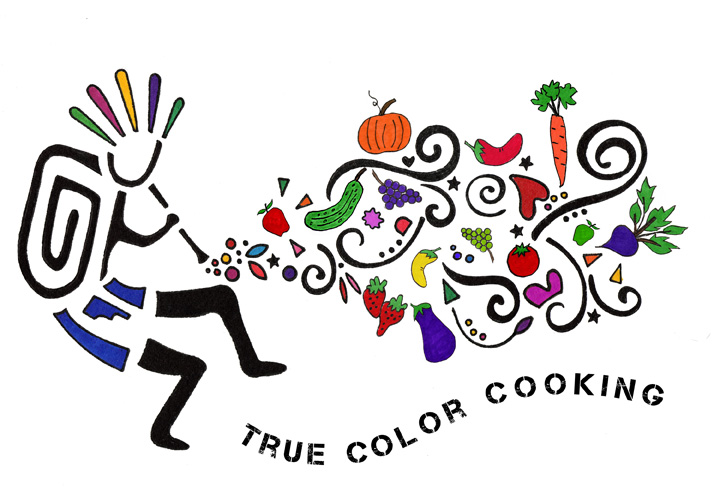Thank you for your participation in a Community Life Changing Event

June 28th – June30th, 2019
TRUE COLORS COMPASSIONATE COMMUNICATION CONTRA DANCE RETREAT SHARED IN COMMUNITY WITH SUMMER CONTRADANCERS DELIGHT HOLIDAY AT THE APPALACHIAN FOLK SCHOOL IN MT. CITY, TN.
General Resources:
Nonviolent Communication: A language of Life 3rd Edition by Marshall Rosenberg
Nonviolent Communication Companion Workbook by Lucy Leu
www.nonviolentcommunications.com;
www.CenterForNonViolentCommunication.com;
http://www.PuddleDancerPress.com
| www.workcollaboratively.com | Facebook | LinkedIn | Twitter |
The REAL Center http://www.therealcenter.org
Roberta Wall of Asheville, NC Roberta Wall is certified as a trainer in Nonviolent Communication (NVC) by the Center for Nonviolent Communication. In communities, schools, businesses, and organizations, Roberta facilitates Leadership Trainings, Public Conversations, Dialogues, Mediations, and visioning and strategizing sessions. Roberta is trained as a lawyer, mediator, trainer, facilitator, parent, activist, mindfulness practitioner, and coach. She shares her time between the US and the Mideast and travels the world coaching couples, individuals and organizations and facilitating workshops and retreats. http://www.steps2peace.com
For Callers: 
Bruce Hamilton‘s book Notes on Teaching Contra Dance at the CDSS store: https://www.cdss.org
Bruce Hamilton article “When Your Not The Caller” When Not Caller
Taking the Dance With You Into the World With NVC*
In 2008, while dancing to Lift Ticket at Contra Dancers Delight Holiday, I noticed that my partner in a dance seemed clearly content and that his intention to be present, to connect one-to-one, was genuine and not sexual. Later, waltzing with this same dancer, I felt in conversation with him, not just following “his lead.” I had danced with him before, enough times to know that something was different, not just about him but within him. Whatever it was, I wanted some (“Harry Met Sally” moment). During a break he described his practice of Nonviolent Communication (NVC) over time, influencing not just his conversation, but dance style as well. “Here are the words that describe my change: curious vs. knowing; inviting vs. demanding; experiencing vs. expecting.” I was hooked.
What is this NVC?
A tool, a method of engaging to listen to what is truly alive within ourselves and others. The founder, Marshall Rosenberg Ph.D., was a clinical psychologist who observed humans habitually defend, withdraw or attack in the face of judgment. Yet we are connection-seeking creatures, and when our need for safety is met, we are capable of empathetic, non-judgmental, compassionate connections. Rosenberg grasped what is now well documented in neuropsychological literature: our brains are wired for deep connection and for building community.
Fall of 2016 came and with it an awareness that an event blending contra dancing, nonviolent communication workshops, and great food were growing in my mental garden. Apparently, it had been growing while I reckoned with physical and sexual violence in the contra community, with the “Black Lives Matter” and “MeToo” movements, political climates around the world and the oral histories of my clients. All of these provided fertile ground for an idea, and the first True Colors Compassionate Communications Contra Dance Retreat was born.
Organizing an entire dance weekend exposed me to how extensively NVC has shaped and is shaping our dance community. Numerous callers, dancers, musicians and dance organizers use nonviolent communication or conscious building strategies to guide our interactions on the dance floor. One of those is caller Bruce Hamilton, who wrote Notes on Teaching Country Dance in 2005 (available in the CDSS store). In the credits, he notes being influenced by Marshall Rosenberg’s Nonviolent Communication. Bruce agreed to co-author this article and to answer a few interview questions:
HB: When and where you first exposed to NVC?
BH: Several ideas are woven together now, and it’s hard to disentangle them. I wanted a way for the students in my hooked. callers’ classes to get the feedback they were able to take in. But as a caller, you put yourself in a really vulnerable position — offering the thing you love most and hoping others will like it, performing a skill that can only be practiced in real time, in front of others, sometimes strangers. I found that if the students got crisp, relevant feedback, unornamented and undistorted by euphemisms, they could hear it and take it in. Unskilled feedback usually gives rise to defensive feelings in the hearer, so we push it aside and lose the useful stuff. Linguistic devices like “I” messages bury the useful information and are easily seen through anyway. I was trying out a feedback model of my own when someone recommended Marshall Rosenberg’s A Model of Nonviolent Communication.
That book aligned with what I’d come up with, but also pointed in a direction that I, an engineer, would never have thought to travel. I read A Language of Life, went to an NVC workshop in San Francisco, and eventually got to hear Marshall in person. I also have some of his lectures on DVD and CD and return to them from time to time. I guess you could say I find his approach valuable 🙂
HB: What prompted you to include NVC in your 2005 book?
BH: The Model book does a better job of getting the idea across in print than I can. That’s the only NVC reference in my book, but his ideas pervade my workshops, where I can present them in person and gently steer. They also inform a workshop handout, “When You’re Not the Caller” and a talk I gave at a Scottish Dance conference in Switzerland.
HB: How has NVC impacted your role as a caller, dance organizer, dancer?
BH: It’s subtle and hard to put into words. Even the term “nonviolent” is a distracting overstatement. Without saying how (since words don’t work for that) I’ll say that as a dancer I’m more fun to dance with; as caller I can ask more of the dancers and they are more comfortable with me in charge; as a teacher of callers I can, as Joseph Pimentel graciously put it, “… reveal[ed] a whole new world I am still happily exploring.” I sometimes hear “this isn’t a way to call; it’s a way to live” and I attribute that entirely to Marshall’s ideas.
HB: How have you seen NVC impact the contra dance community?
BH: I have to use words here, and like “nonviolent,” they’ll present a caricature of what I mean. Please try to hear through them. I would say that that I miss the impact NVC can make. The scene seems to be trending away from human-to-human and heart-based interaction and toward a me-oriented activity. I feel a sense of “I paid for entertainment; entertain me,” a valuing of the new for novelty’s sake, a valuing of what makes the dancer look good over what makes the set look good or work well, and an appreciation of the music mostly for how exciting it is. A very few people — Fred Park and Bob Dalsemer come to mind — change the room. It seems they do that just by their being, but that’s the way NVC works. [end]
True Colors Compassionate Communications Contra Dance Retreat 2019 is designed for all participants to learn about NVC through experiencing NVC basics both on and off the dance floor. Who creates the experience? You! Your presence and passion for dancing coupled with a willingness to learn and share are key ingredients. Visualize a typical contra weekend schedule. Add to the mix NVC dance-shops facilitated by fellow contra dancers who practice and teach the NVC model. We will be exploring the four principles of NVC: Observation, Feelings, Needs, and Request in both group workshop format, individual NVC practice opportunities and on the dance floor. In addition to NVC focused danceshops, the dance weekend organizers, callers, chef and sound crew will be invited to learn about NVC prior to the event and to participate in the workshops as their obligations permit.
Many members of the dance community already seek authentic and respectful connection to each other. The skills of Nonviolent Communication are a subtle but effective tool, and we believe that a retreat like this will be a useful and enjoyable introduction. Are you interested in helping get this started? What would you want to get out of it? What would lead you to invite your friends?
 Save the Dates June 28th – July 4th as we team up with Summer Contradancers Delight Holiday
Save the Dates June 28th – July 4th as we team up with Summer Contradancers Delight Holiday
http://www.contradancersdelight.com
Harriette Bugel is a contra dancer, chef, singer, and knitter who currently resides in Asheville, NC. She works full time as a Licensed Clinical Social Worker and finds the practice of NVC a valuable resource for herself and her clients. She shares her home with Skyler, her service dog. and three cats.
Bruce Hamilton is an internationally known teacher of English (and Scottish) country dancing. He’s been calling dances since 1971, and has led dances in England, Australia, and Japan, as well as being in high demand for dance camps around the US. He is a thoughtful and enthusiastic teacher and imbues the dances with energy and fun.
*quote from Rex Blazer of Lift Ticket
This article printed in CDSS NEWS, WINTER 2018-2019 27 CDSS.ORG
